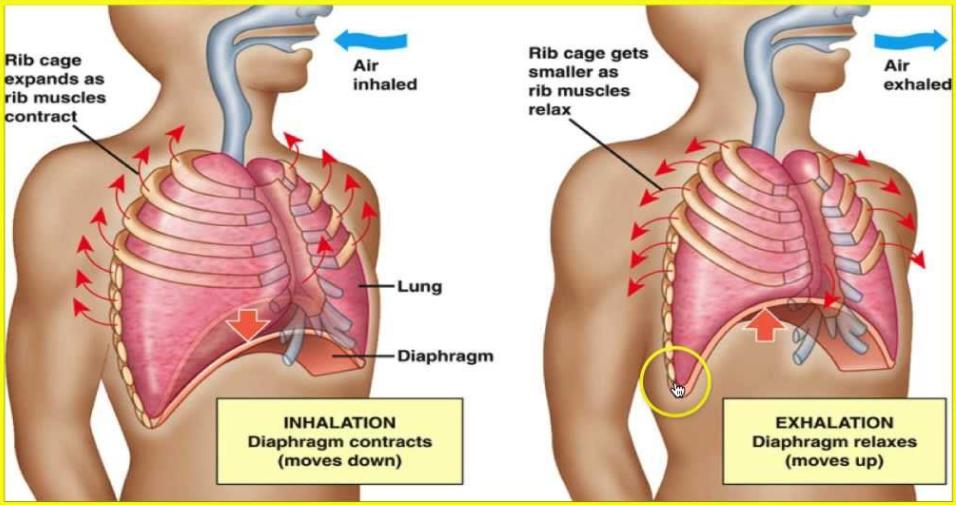Adding Diaphragmatic Breathing Exercises to Treat Chronic Low Back Pain

Welcome to Chi-research. A weekly publication by ProCredits reviewing current research associated with the Chiropractic profession. In this week’s edition, we are reviewing a 2023 article using a randomized control trial to evaluate the effect of adding diaphragmatic breathing exercises to core stabilization exercises in patients with chronic low back pain.
Chronic Low Back Pain
Low back pain (LBP) is a common health problem accounting for the third most common reason for visits to the doctor’s office. It is estimated that 82% of the population will experience back pain during their lives and 10% of those cases become chronic. Chronic low back pain is defined as pain that persists for over 3 months consisting of spinal instability, impaired postural control, altered lumbosacral proprioceptive acuities, altered patterns of activation of abdominal and extensor muscles, fatigued back extensors, alterations in the somatosensory system.

CLBP is etiologically related to the core trunk musculature, a box-like structure surrounded by the abdominal, paraspinal, diaphragm, and pelvic floor muscles, which provide primary stability to the lumbar spine.
Core stabilization exercises (CSEs) are a key component in the management of CLBP. During CSEs, the local muscles are activated through isometric contraction of the transverse abdominis (TrA), which causes a co-contraction of the lumbar multifidus, small segmental muscles of the spine that cannot be contracted consciously, which provide segmental control over primary stabilizers. The diaphragm is the primary inspiratory muscle that affects the stability of the lumbar spine during postural activity.
The proper activation of the diaphragm during normal breathing expands the lower ribs from inside to outside. This expansion provides space for increased intra-abdominal pressure. The TrA acts like a corset by providing stretching forces on the fascia, which builds up the intra-abdominal pressure that stabilizes and unloads the lumbar spine. Studies show that diaphragm fatigability is common among individuals who have recurrent LBP, thus reducing the pulling forces of TrA on the fascia, which compromises the stability of the lumbar spine.
Today’s Spotlight: Chronic Low Back Pain
In today’s spotlight study, Effect of Adding Diaphragmatic Breathing Exercises to Core Stabilization Exercises on Pain, Muscle Activity, Disability, and Sleep Quality in Patients with Chronic Low Back Pain: A Randomized Control Trial, the authors added specific diaphragmatic breathing exercises to current CSEs to see if this addition improved measured parameters. Twenty-two patients with CLPB were randomly allocated to the experimental (DBE + CSE) or control group (CSE only).
Each group had 12 treatment sessions 3 times a week for 4 weeks. Patients were evaluated before and after the twelve sessions. Surface electromyography of transverse abdominis, Oswestry Disability Index, Fear Avoidance Belief Questionnaire, Pittsburgh Sleep Quality Index, Numeric Pain Rating Scale, and chest expansion were used as outcome measures for pain, muscle activity, disability, and sleep quality. These parameters typically are negatively correlated with CLBP in addition to numeric pain rating. For example, 55% of CLBP patients report restless sleep, chest expansion is significantly reduced in CLBP, and patients with LBP report elevated levels of fear of activities that could elicit pain.
Results showed the combination of DBE and CSE compared to CSE alone showed significant improvement in all outcome measures and improved core muscle activation and chest expansion.
How to perform the Diaphragmatic Breathing Technique for Chronic Low Back Pain
1. Lie on your back on a flat surface or in bed, with your knees bent and your head supported. You can use a pillow under your knees to support your legs. Place one hand on your upper chest and the other just below your rib cage. This will allow you to feel your diaphragm move as you breathe.
2. Breathe in slowly through your nose so that your stomach moves out against your hand. The hand on your chest should remain as still as possible.
3. Tighten your stomach muscles, letting them fall inward as you exhale through pursed lips. The hand on your upper chest must remain as still as possible.
4. Practice these 2-5 minutes each day until it feels natural and then try it in the seated position.
Treat Your Chronic Low Back Pain and More
Check out ProCredits’ Free Course and Chiropractic Continuing Education Hours: A free one-hour course with ProCredits! Don’t miss this opportunity to see why ProCredits should be your go-to for Chiropractic continuing education and take your practice to the next level!
By taking advantage of this one-hour course, you will be able to further develop your skills and take your practice to a whole new level. This course is designed to provide you with valuable insights and hands-on experience that will help you enhance your knowledge and proficiency.
If you’re ready to take proactive steps towards a healthier back, Sign up now and start learning, while you’re at it, follow us on Facebook and subscribe to our YouTube channel for weekly updates!
Live Webinar: Chiropractic Recordkeeping & Coding to Prevent Audits

Join us for a crucial 𝐰𝐞𝐛𝐢𝐧𝐚𝐫 𝐨𝐧 𝐂𝐡𝐢𝐫𝐨𝐩𝐫𝐚𝐜𝐭𝐢𝐜 𝐑𝐞𝐜𝐨𝐫𝐝𝐤𝐞𝐞𝐩𝐢𝐧𝐠 & 𝐂𝐨𝐝𝐢𝐧𝐠 𝐭𝐨 𝐏𝐫𝐞𝐯𝐞𝐧𝐭 𝐀𝐮𝐝𝐢𝐭s, led by industry expert Marty Kotlar DC, CPCO, CBCS, COF! Mark your calendars for May 9, 2024, from 1-3pm EST.
Dr. Marty Kotlar, President of Target Coding and renowned Chiropractic documentation guru, will delve into the latest in Chiropractic evaluation and management, time vs clinical decision-making, common ICD-10 codes, and therapeutic procedures. Gain insights into key recordkeeping components, and outcome assessment measures, and avoid the most common documentation mistakes – all for just $29!
Don’t miss out on this invaluable opportunity to enhance your practice and safeguard against audits.
Video Testimonials: Uncover Real Chiropractic Journeys
As you conclude your visit, why not delve into the real experiences of Chiropractors who’ve navigated their educational path with ProCredits? Through our video testimonials, you can gain an authentic understanding of the value and rewards of Chiropractic Continuing Education Hours.
In a profession as dynamic as chiropractic care, the need for continuous learning is paramount. Keeping abreast of the latest advancements, techniques, and research is the key to delivering top-notch care to your patients. Let the journeys of these Chiropractors guide your way with ProCredits.
Most Popular
Can NSAIDs Use Reduce Testosterone?
April 15, 2024
Microplastics and Nanoplastics Found in Carotid Plaques!
March 13, 2024
Social Media
Get The Latest Updates
Subscribe To Our Weekly Newsletter
No spam, notifications only about new products, updates.
Related Posts

Adding Diaphragmatic Breathing Exercises to Treat Chronic Low Back Pain
Welcome to Chi-research. A weekly publication by ProCredits reviewing current research associated with the Chiropractic profession. In this week’s edition, we are reviewing a 2023

Can NSAIDs Use Reduce Testosterone?
Welcome to Chi-research. A weekly publication by ProCredits reviewing current research associated with the Chiropractic profession. In this week’s edition, we are reviewing a 2018

Is Poor Trunk Postural Control a Risk Factor for Low Back Pain?
Welcome to Chi-research. A weekly publication by ProCredits reviewing current research associated with the Chiropractic profession. In this week’s edition, we are reviewing a 2024

Microplastics and Nanoplastics Found in Carotid Plaques!
Welcome to Chi-research. A weekly publication by ProCredits reviewing current research associated with the Chiropractic profession. In this week’s article, we are reviewing a 2024
